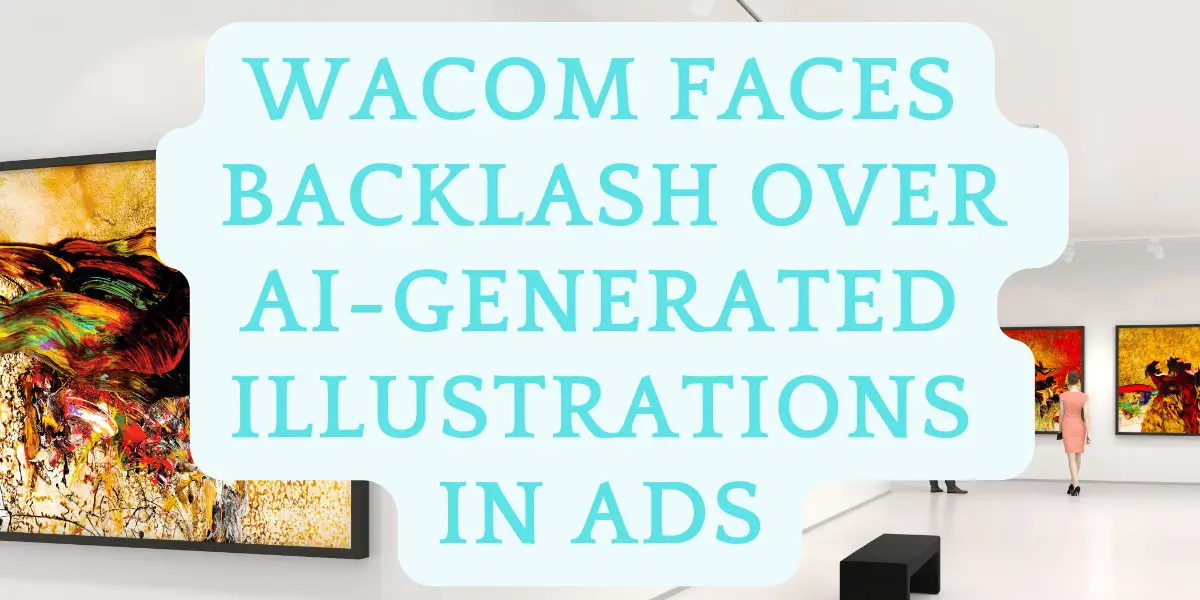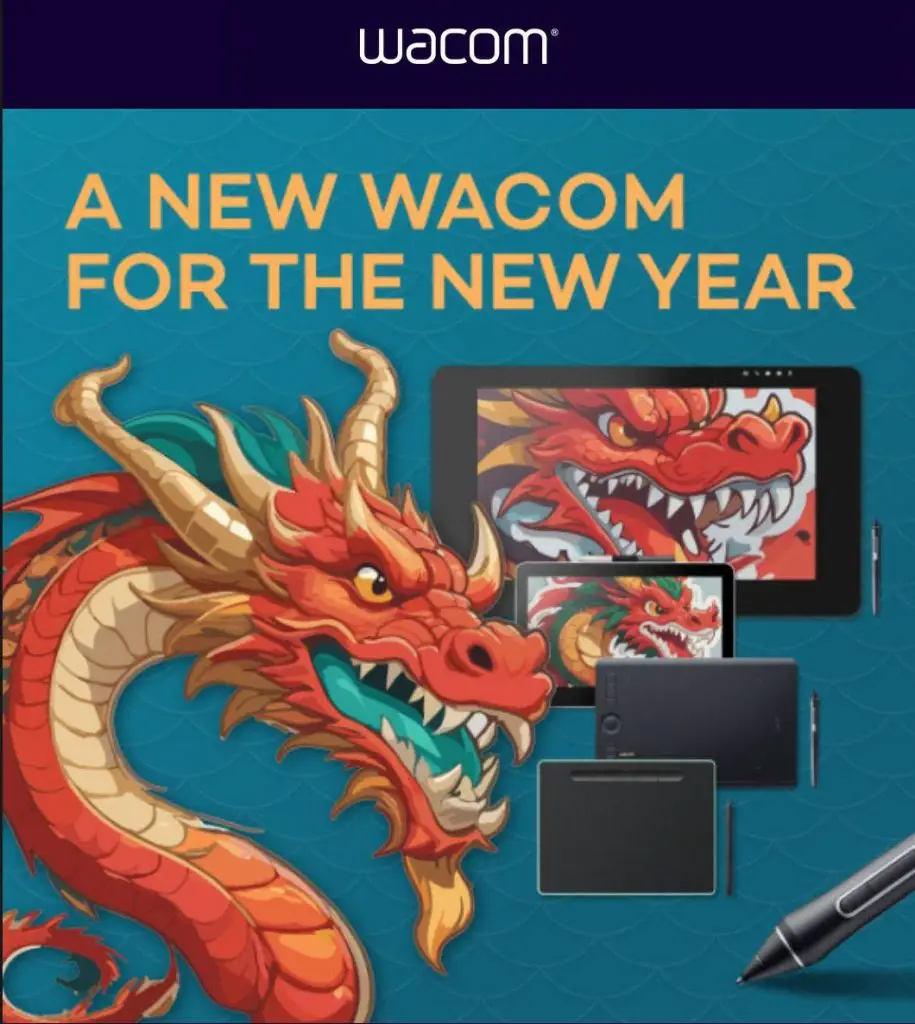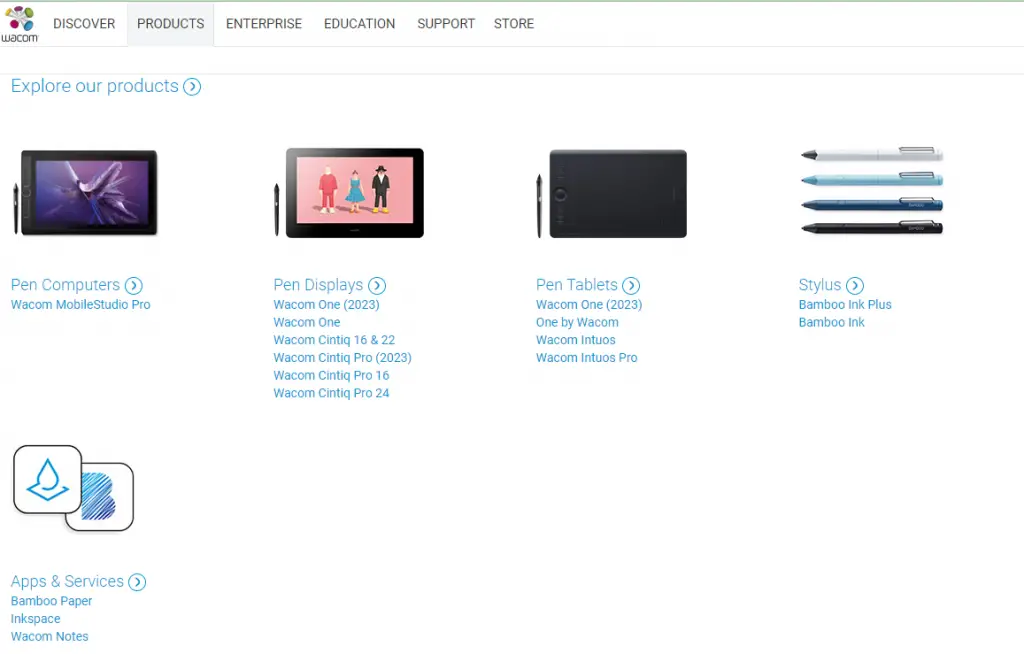Wacom Faces Backlash Over AI-Generated Illustrations in Ads

In an era where technology continually reshapes the boundaries of creativity, Wacom, a leader in digital art tools, recently found itself at the center of a heated debate. The controversy erupted over their decision to use AI-generated illustrations in their advertising campaigns, a move that sparked widespread discussion within the artistic community and beyond. This decision by Wacom, traditionally known for its high-quality pen tablets and digital drawing tools, raised critical questions about the role of AI tools in creative industries. It challenged the delicate balance between technological innovation and the authenticity of human creativity. This article delves into the nuances of this controversy, exploring the public response, the impact on Wacom’s brand, and the broader implications for AI’s role in art and design.
The controversy over Wacom’s AI-generated ads underscores the complex relationship between technology and art. It highlights the need for ethical considerations in AI’s use and the importance of balancing technological innovation with the preservation of human creativity.
Table of Contents
What is Wacom?
Wacom is a globally recognized leader in the digital pen tablet market, renowned for its innovative contributions to the world of digital art and design. Founded in Japan in 1983, Wacom has established itself as a pioneer in developing technology that enhances the creative process for artists, designers, and educators. Their product range, notably including pen tablets, interactive pen displays, and digital interface solutions, is widely used in various industries for digital content creation, from graphic design and animation to industrial design and education.
The company’s commitment to quality and innovation has made Wacom tablets and styluses essential tools for professionals and hobbyists in the digital art world. Wacom’s technology is celebrated for its ability to replicate the natural feel of traditional art tools, offering users an intuitive and seamless experience. This dedication to merging the tactile experience of traditional art with the versatility of digital technology has solidified Wacom’s reputation as a key player in the creative technology industry, continually pushing the boundaries of what’s possible in digital artistry.
Also read:The Sports Illustrated Controversy: AI Writers in Sports Journalism,Billy Strings Addresses AI Art Uproar Over His NYE Merchandise
Tablet Maker Wacom Uses AI Illustrations in Ads
Wacom, a leading name in digital art technology, recently sparked controversy by using AI-generated illustrations in their advertising campaigns. This decision has been met with significant backlash from the art community, particularly from professional artists and illustrators who form a substantial part of Wacom’s user base. The use of AI illustrations, seen as a departure from Wacom’s traditional support and celebration of human creativity, has raised questions about the company’s commitment to its core audience.
The controversy centers around the perception that Wacom, a company whose products are integral to digital artists, is endorsing a technology that could potentially undermine the very skills and talents their products are designed to enhance. This move has been interpreted by some as a disregard for the efforts and talents of real artists, who rely on Wacom’s tools for their creative work. The backlash is not just a matter of artistic integrity but also touches on broader concerns about AI’s role in the creative industries and its implications for professional artists’ future.

Functions of Wacom
Pen Tablets
Wacom’s pen tablets, like the Wacom Intuos and Intuos Pro, are designed for artists, designers, and photographers who require a natural and intuitive drawing experience.
- Pressure Sensitivity: Allows for variations in line width and opacity, mimicking traditional drawing tools.
- Customizable ExpressKeys: Users can assign shortcuts to these keys for quick access to frequently used functions.
- Ergonomic Design: Designed for comfort, even during long hours of use, reducing strain on the hand and wrist.
- Compatibility: Works seamlessly with various software, including Adobe Photoshop, Illustrator, and many more.
Pen Displays
Pen displays, such as the Wacom Cintiq and Cintiq Pro, combine the functionality of a pen tablet with a high-resolution display, offering a direct-on-screen drawing experience.
- Direct Drawing Experience: Artists draw directly on the screen, which enhances accuracy and detail in artwork.
- High-Resolution Displays: Offer crisp, clear visuals, making them suitable for high-end graphic work.
- Adjustable Stands: Provide flexibility and comfort, allowing users to adjust the display to their preferred angle.
- Multi-Touch Functionality: Some models support touch gestures, enabling intuitive navigation and control.
Stylus and Accessories
Wacom’s range of styluses, like the Bamboo Ink and Pro Pen, are engineered for artists who demand versatility and precision.
- Natural Pen Feel: Designed to feel like a traditional pen or brush, providing a familiar experience for artists.
- Tilt Recognition: Mimics the effect of tilting a real brush, adding depth and dimension to digital art.
- Programmable Side Switches: Allow for quick access to shortcuts, improving workflow efficiency.
- Compatibility with Various Devices: Can be used with Wacom products as well as other touchscreen devices, offering flexibility.
Public Response to Wacom's AI Advertisements
Artist Community’s Outcry
- Sense of Betrayal: Artists felt betrayed by a brand they relied on for fostering their creativity.
- Fear of Devaluation: Concerns that AI art could devalue the skills and talents of human artists.
- Calls for Boycott: Some artists and users called for a boycott of Wacom products in protest.
Mixed Reactions on Social Media
- Debate on AI’s Role: Discussions about the ethical implications and future role of AI in creative fields.
- Support for Innovation: A minority voiced support for Wacom’s exploration of new technologies.
- Calls for Clarification: Many users demanded an explanation or statement from Wacom.
Impact on Brand Perception
- Trust Issues: Questions arose about Wacom’s commitment to supporting human artists.
- Brand Image: Potential long-term damage to Wacom’s image as a supporter of traditional artistry.
- Competitor Comparison: Comparisons made with competitors who have not used AI in similar ways.
Negative Impacts of AI Marketing by Wacom
Erosion of Trust Among Core Users
Wacom’s core user base, predominantly artists and designers, felt a sense of betrayal. This group has long relied on Wacom’s products for their creative endeavors, valuing the company’s apparent commitment to fostering human artistry.
- The use of AI-generated art in advertising was seen as a move away from this commitment, leading to a loss of trust.
- Many artists expressed disappointment, feeling that Wacom was undermining the very skills their products are meant to enhance.
Potential Loss of Market Share
The controversy has the potential to impact Wacom’s market share. As artists and designers look for brands that align with their values, competitors might gain an edge.
- Competing brands could capitalize on this sentiment by emphasizing their support for human artists in their marketing strategies.
- Wacom might face a decline in sales if the artist community starts to shift their loyalty to other brands that they feel better represent their interests and values.
Damage to Brand Reputation
Wacom’s reputation as a leader in creative technology has been tarnished by this incident. The brand has long been associated with high-quality tools that enhance the creative process.
- The use of AI in their marketing contradicts this image and could lead to long-term reputational damage.
- Restoring this reputation will require significant effort and may involve reevaluating their marketing strategies to better align with their core audience’s values.

Public Response and Negative Impacts
Artist Community’s Reaction
The artist community, which forms a significant portion of Wacom’s customer base, reacted strongly to the company’s use of AI-generated art in advertisements. Many artists felt that this move undermined the value of human creativity and skill, which are essential in their profession. This sentiment was particularly strong among digital artists who have traditionally relied on Wacom’s products as essential tools for their work. The community’s reaction was not just limited to expressions of disappointment; it also sparked a broader discussion about the role of AI in art and the importance of supporting human artists. This debate extended beyond Wacom’s customer base, engaging a wider audience in the conversation about the future of digital art and the ethics of AI-generated content.
Impact on Wacom’s Brand Image
Wacom’s decision to use AI illustrations in its advertising has had a significant impact on its brand image. Known for its commitment to supporting artists and their creative processes, the use of AI-generated art was seen as a departure from these values. This has led to a perception among some customers that Wacom is less interested in fostering human creativity and more focused on jumping on the AI bandwagon. The backlash has the potential to alienate long-time users and could deter new customers who value authenticity and human artistry in their creative tools. Rebuilding this trust and brand image will require Wacom to re-engage with its core audience and demonstrate a renewed commitment to supporting the artist community.
Broader Implications for the Creative Industry
The controversy surrounding Wacom’s use of AI in advertising has broader implications for the creative industry. It highlights the growing tension between technological advancement and artistic integrity. While AI offers new possibilities in various fields, its role in creative processes is a contentious issue, especially when it comes to replacing human creativity. This incident has prompted discussions within the industry about the ethical use of AI in art, the importance of supporting human artists, and the potential future of AI in creative professions. These conversations are crucial as they will shape the way technology is integrated into creative practices and how it is perceived by both creators and consumers.
Wacom's Response to the Controversy
In response to the controversy surrounding their use of AI-generated illustrations in advertisements, Wacom took steps to address the concerns of their user base and the broader artistic community. The company issued a statement acknowledging the backlash and explaining their position on the use of AI in their marketing. They emphasized that their intention was not to undermine human artists but to explore the possibilities of new technologies in the creative field. Wacom also reassured their commitment to supporting the artist community, which has been the cornerstone of their brand identity.
Furthermore, Wacom engaged in direct communication with their users through various channels, including social media and artist forums, to better understand their concerns. They expressed a willingness to learn from this experience and to ensure that their future marketing strategies align more closely with the values and expectations of their customers. This response highlighted Wacom’s recognition of the importance of maintaining a strong relationship with their user community and their openness to adapting their practices in light of feedback.
The Role of AI in Creative Industries
AI as a Tool for Enhancement, Not Replacement
The integration of Artificial Intelligence in creative industries is increasingly seen as a tool for enhancement rather than a replacement for human creativity. AI’s role is evolving into one of an assistant that augments the capabilities of artists and designers. In fields like graphic design, music production, and even film, AI algorithms are being used to streamline workflows, generate new ideas, and perform tasks that are tedious or time-consuming for humans. This approach allows creatives to focus more on the aspects of their work that require human intuition and emotional intelligence. However, the key is to maintain a balance where AI supports rather than overshadows human creativity. The challenge for industries is to leverage AI in a way that respects and elevates the human element of art, ensuring that technology acts as a complement to, rather than a competitor against, human creativity.
Ethical Considerations and Future Trends
As AI becomes more prevalent in creative industries, ethical considerations are coming to the forefront. Questions about originality, copyright, and the moral implications of AI-generated art are being hotly debated. There’s a growing concern about the potential for AI to replicate and distribute works without proper attribution or compensation to the original creators. This concern extends to the impact of AI on employment within creative fields, with fears that AI could replace human artists in some areas. Looking to the future, the industry faces the challenge of establishing guidelines and best practices for the use of AI in creative work. This includes ensuring fair compensation and recognition for creators and developing AI in a transparent and responsible manner. The goal is to create a symbiotic relationship between AI and human creativity, where each enhances the other and leads to new possibilities in art and design.

Conclusion
The controversy surrounding Wacom’s use of AI-generated illustrations in its advertisements has sparked a significant debate about the role of AI in the creative industries. This situation has highlighted the delicate balance between embracing technological advancements and respecting the traditional values of human creativity. Wacom’s response to the backlash, emphasizing their commitment to the artist community, reflects an understanding of the importance of maintaining trust and integrity in a market that heavily relies on human creativity. The broader implications of this controversy extend beyond Wacom, posing critical questions about the ethical use of AI in art and the future of creative professions. As the industry navigates these challenges, the focus should be on fostering a harmonious relationship between AI and human creativity, ensuring that technology serves as a tool for enhancement and not a replacement.

